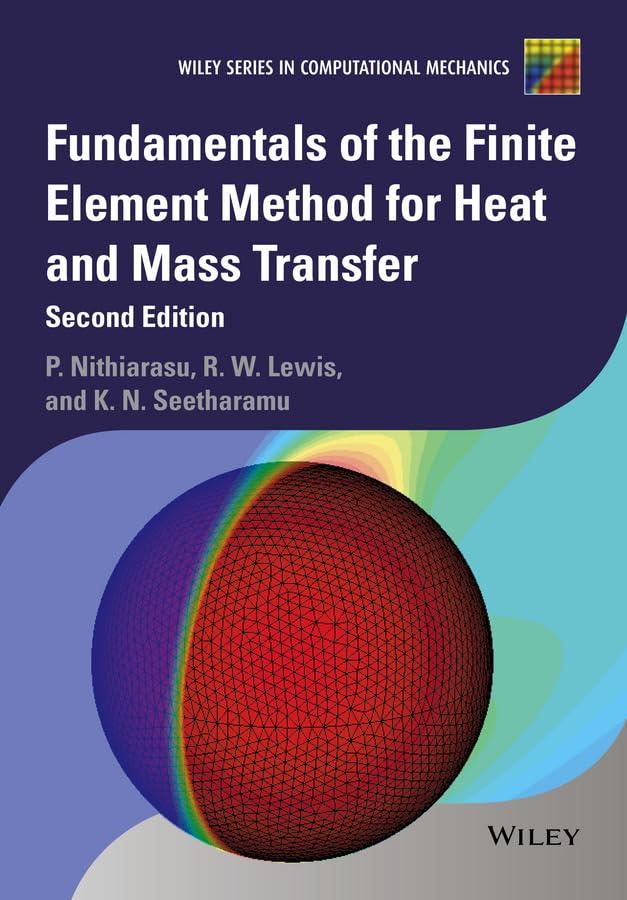In Exercise 5.8.1, if the thickness increases uniformly from (1 mathrm{~cm}) from the bottom edge to (3
Question:
In Exercise 5.8.1, if the thickness increases uniformly from \(1 \mathrm{~cm}\) from the bottom edge to \(3 \mathrm{~cm}\) at the top edge, rework the problem with
(a) two triangles;
(b) eight triangles.
Data From Exercise 5.8.1
A square plate size \(100 \mathrm{~cm} \times 100 \mathrm{~cm}\) is subjected to an isothermal boundary condition of \(500^{\circ} \mathrm{C}\) on the top and to convection environment (on all the remaining three sides) of \(100^{\circ} \mathrm{C}\) with a heat transfer coefficient of \(10 \mathrm{~W} / \mathrm{m}^{2} \mathrm{~K}\). The thermal conductivity of the material of the plate is \(10 \mathrm{~W} / \mathrm{m}^{2} \mathrm{~K}\). Assume the thickness of the plate is \(1 \mathrm{~cm}\). Determine the temperature distribution in the plate using (a) Two triangles; (b) Eight triangles. Calculate the temperature at a location \((x=30 \mathrm{~cm}, y=30 \mathrm{~cm}\) ) and heat fluxes in \(x\) and \(y\) directions.
Step by Step Answer:

Fundamentals Of The Finite Element Method For Heat And Mass Transfer Wiley Series In Computational Mechanics
ISBN: 272391
2nd Edition
Authors: P. Nithiarasu, R. W. Lewis, K. N. Seetharamu





